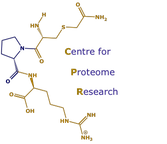On catnip and mosquitoes - solving an evolutionary puzzle
Reiko Uenoyama, Tamako Miyazaki, Jane L. Hurst, eRobert J. Beynon, Masaatsu Adachi, Takanobu Murooka, Ibuki Onoda, eYu Miyazawa, Rieko Katayama, Tetsuro Yamashita, Shuji Kaneko, Toshio Nishikawa and Masao Miyazaki (2021) The characteristic response of domestic cats to plant iridoids allows them to gain chemical defense against mosquitoes Science Advances Vol. 7, no. 4, eabd9135 DOI: 10.1126/sciadv.abd9135
Domestic cats and other felids rub their faces and heads against catnip (Nepeta cataria) and silver vine (Actinidia polygama) and roll on the ground as a characteristic response. While this response is well known, its biological function and underlying mechanism remain undetermined. Here, we uncover the neurophysiological mechanism and functional outcome of this feline response. We found that the iridoid nepetalactol is the major component of silver vine that elicits this potent response in cats and other felids. Nepetalactol increased plasma β-endorphin levels in cats, while pharmacological inhibition of μ-opioid receptors suppressed the classic rubbing response. Rubbing behavior transfers nepetalactol onto the faces and heads of respondents where it repels the mosquito, Aedes albopictus. Thus, self-anointing behavior helps to protect cats against mosquito bites. The characteristic response of cats to nepetalactol via the μ-opioid system provides an important example of chemical pest defense using plant metabolites in nonhuman mammals.
Domestic cats and other felids rub their faces and heads against catnip (Nepeta cataria) and silver vine (Actinidia polygama) and roll on the ground as a characteristic response. While this response is well known, its biological function and underlying mechanism remain undetermined. Here, we uncover the neurophysiological mechanism and functional outcome of this feline response. We found that the iridoid nepetalactol is the major component of silver vine that elicits this potent response in cats and other felids. Nepetalactol increased plasma β-endorphin levels in cats, while pharmacological inhibition of μ-opioid receptors suppressed the classic rubbing response. Rubbing behavior transfers nepetalactol onto the faces and heads of respondents where it repels the mosquito, Aedes albopictus. Thus, self-anointing behavior helps to protect cats against mosquito bites. The characteristic response of cats to nepetalactol via the μ-opioid system provides an important example of chemical pest defense using plant metabolites in nonhuman mammals.
